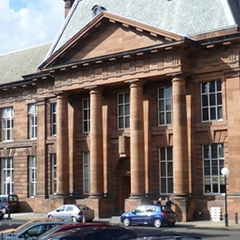3 Bruntsfield Place, Edinburgh EH10 4HN

Theodore Clerk, the first professionally certified Ghanaian architect, lived at 3 Bruntsfield Place between 1940 and 1942. Coming from a large family of pioneering scholars and clergy, Theodore secured a government scholarship to study Architecture at Edinburgh College of Art in 1938. Whilst still a student, Clerk worked for both the Scottish National Buildings Record and the Department of Health for Scotland, undertaking measuring work and housing surveys. Upon completing his examinations in 1943, Clerk was admitted as an associate by the Royal Institute of British Architects (ARIBA) and was awarded the Rutland Prize by the Royal Scottish Academy. When Clerk returned to Ghana, he was, for a time, the only Ghanaian architect in the country. Clerk is best known for his work on the port city of Tema, the largest seaport in Ghana. Commissioned by President Kwame Nkrumah, he designed and built affordable housing for low-income dockworkers at the harbour. Clerk was also the first president of the Ghana Institute of Architects and authored its first constitution. Theodore’s sister, Matilda J. Clerk, was also a student at Edinburgh. She was the second Ghanaian female doctor and the first Ghanaian woman to be awarded a scholarship for university education abroad.


